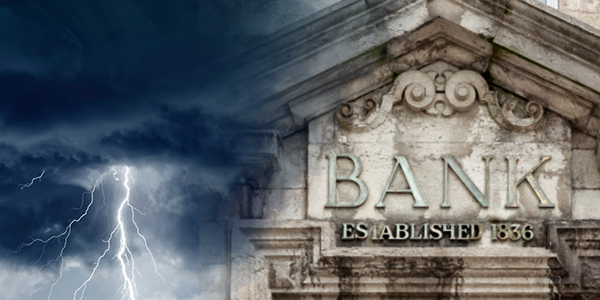Will Irma Hurt Florida Banks? Here’s What Our Research Shows ...

|
|
Hurricane Irma had its eye set on the east coast of Florida, with catastrophic damage predictions running as high as $200 billion. But she switched gears at the last minute, losing power and moving over to the west side of the state instead.
Don’t get me wrong: By making her way north over the Florida Keys and the west coast, Irma devastated many lives, homes, and businesses. But because the storm didn’t strike the major metropolitan areas of Southeast Florida with Category 4 or even 5 winds, total damage estimates have dropped to around $50 billion.
What does that mean for the safety of Florida’s banks? Let me try to answer that question now.
The Florida Keys experienced the first landfall, taking the brunt of Irma. Although there are numerous financial institutions with branches in the Keys, I found only one bank that operates solely in the island chain.
First State Bank of the Florida Keys (Rated “B-”) is a community bank with eleven branches all located along the Florida Keys, stretching from Key Largo all the way down to Key West. The bank had $906 million in assets and net income of $6.5 million as of Q2 2017.
With a reported 25% of homes in the Keys damaged, and many businesses hit hard as well, it is inconceivable that this bank and its customers will not be affected by Irma. It’s clear that both homeowners and businesses will require federal aid, in addition to insurance funds, to help return to normal. In the meantime, the bank and others that operate in the Keys will likely see significant changes in loan performance.
Before the hurricane, First State Bank reported above-industry-average delinquency (loans past due 90-days or more). But the bank also reported lower-than-average loans being written off as uncollectable. This suggests that the bank already works with its customers to resolve their debt problems. And in the wake of Irma, it has announced that it will waive late fees for loans and not report late payments to credit bureaus through the end of the year.
Irma’s second landfall was on Marco Island, on the west coast of Florida just south of Naples and Ft. Myers. While there are no banks based in Marco Island, Naples and Ft. Myers have several local institutions.
In Naples, there is Encore Bank (Rated “C+”) with $396.8 million in assets, and First Florida Integrity Bank (Rated “C+”) with $1.3 billion in total assets.
Ft. Myers has Preferred Community Bank (Rated “B+”) with $116.1 million in assets and Edison National Bank (Rated “C”) with $297.6 in assets. FineMark National Bank & Trust (Rated “C+”) is the largest of the three banks domiciled in Ft. Myers, with $1.5 billion in assets. They will bear watching in the weeks and months ahead given the damage in the region.
Unexpectedly and fortunately, the Tampa Bay area was spared the worst of the wrath of Irma. Even the much anticipated storm surge became just a cell phone spectacle, mainly because of the dramatic emptying of the bay as the storm arrived.
Overall, there are 137 Florida-based banks with combined total assets of $154.3 billion. It is yet unclear as to how hard these banks got hit and what type of damage they experienced.
But it will certainty take them extra time and resources to fully recover and get back to business as usual. Banks in Naples and Ft. Myers are likely to recover faster as Irma’s impact on them wasn’t as severe, while First State Bank will likely see longer-lasting consequences.
Two final points: First, many of these banks are true community members. They’re waiving any fees their customers may incur because of the hurricane, and doing their best to work with them. While they will certainly hurt financially when the time comes to add everything up, their efforts to assist the surrounding communities are to be commended.
Second, no matter the ultimate hurricane damage tally in the Sunshine State, we always recommend you check your bank’s safety rating on the Weiss Ratings website. You never know when disaster could strike next, and that’s why doing business with only the safest and soundest banks is a smart financial move.
Think Safety,
Remi Lukosiunas
Money and Banking Edition, By Remi Lukosiunas, Financial Analyst Remi Lukosiunas, a Financial Analyst, joined Weiss Ratings in 2014 with a financial services background in internal audit and the credit union industry. Remi conducts banking, credit union, insurance and investment research. He has also written extensively on stocks and investing using ratings as a guide. Remi is a graduate of Florida State University with a degree in multinational business. |


